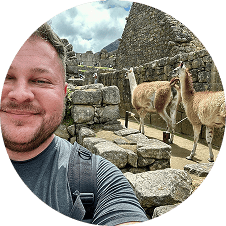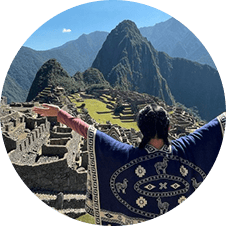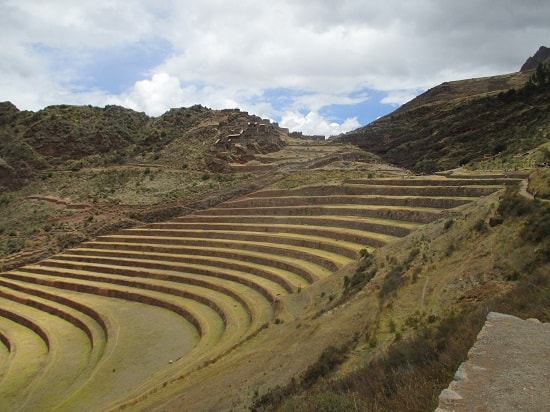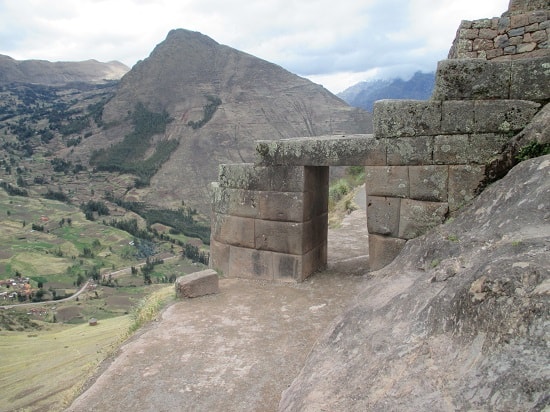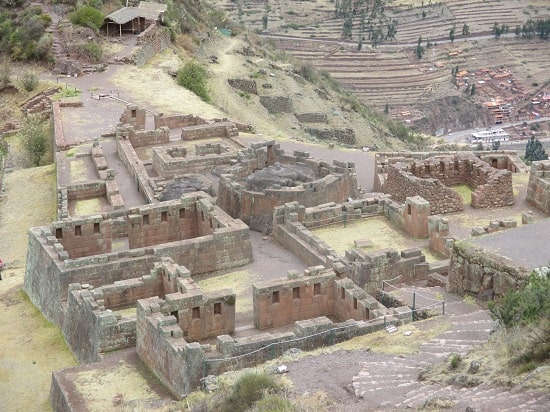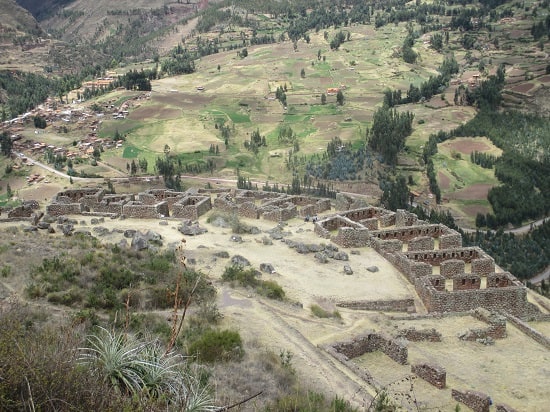Hiking Pisac Ruins
December 12, 2014One of the Sacred Valley’s best archaeological gems is the beautiful Inca ruins at Pisac. Set in the mountainside high above the village of Pisac, the ruins are a must visit for anyone heading to the Sacred Valley. However, unbeknown to most tourists and rarely visited, the main part of the ruins is 25-30 minutes down the mountainside. If you are a little adventurous and want to experience something unique, something that 95% of tourists to Pisac never experience, then make sure you include a hike down through Pisac Ruins. It costs nothing extra, and it may just be the highlight of your trip. The content below discusses hiking Pisac Ruins in detail but if you want to see different options for tours in Sacred Valley right away, take a look at this page on the www.findlocaltrips.com website.
An Overview of the Ruins
The Pisac Ruins are situated at the eastern end of the Sacred Valley, 1 hour from Cusco. Located high above the valley floor and the modern colonial town of Pisac, the ruins are considered to be one of the finest remaining Inca archeologic sites in the country. Some historians suggest that the name Pisac is derived from the word “Pisaca” meaning partridge, and that the vast agricultural terraces represent the wings of the partridge. The ruins are spread out over a large area and follow a long mountain top crest. Close to the main car park at the top of the ruins you will find the largest known Inca cemetery, a residential settlement and ceremonial baths. Further down the mountain is the temple complex constructed from exquisitely carved pink granite, featuring a sun temple, ceremonial alters, water channels and wells. Then finally a few hundred yards further down the mountain is a beautiful urban area located on a high semi-circular ledge. The ruin is surrounded by vast sweeping agricultural terraces which harmoniously blend into the natural curvature of the landscape.
Getting from Pisac Village to the Ruins
From the village of Pisac on the valley floor, a hidden access road leads out the rear of the village gently climbing the mountain to the ruins. A taxi can be hailed from anywhere in the village, but taxis that specialize in taking tourists to the ruins are usually found on the main Urubamba Road (where the road from Cusco arrives in Pisac). Of course taxis will try to charge as much as they can, but a fair price for the journey is about 20 – 25 Soles (US$ 7 – 8.50). The scenic drive up the mountain to the control point takes about 15 – 20 minutes. You will need to show (or buy) your entrance ticket (BTG Ticket), before continuing on for a further 10 minutes to the main car park. Make sure that you agree with your taxi driver a fare to take you to the very top of the ruins, and not the control point!
The Trail
Once at the very top you will need to fight your way through the tourist buses all jammed in the small car park to the start of the ruins. You will arrive at a huge set of sweeping agricultural terraces that descend down the mountainside. A well-trodden path leads off to the right where you’ll find the majority of tourists located. Here you’ll see the urban settlement known as Q’alla Q’asa located above you on the mountainside. A series of ceremonial baths fed by an intricate network of stone channels and the Inca cemetery on the adjacent hillside (hundreds of holes in the mountain) are also found in the same area.

Leaving the Other Tourists Behind
Continuing on, the path turns into more of a trail which hugs the mountainside. After a few hundred yards you will pass through a beautiful lithic doorway which marks the entrance to the main temple complex. With breathtaking views on your left, the undulating path continues along the mountainside before reaching a narrow tunnel. Emerging from the short tunnel you will get the first glimpse of a small residential dwelling and agricultural zone on your lower left often referred to as Pisaca or Q’allaqasa. The trail continues on for another 10 minutes to the main temple complex of Pisac Ruins.
ENTERTAINMENT TIP: If looking for fun at night, or to watch sports during the day, or even a taste of home, visit the Wild Rover Hostel Cusco for great food, sports and beer! Entrance to their bar is free even for non-guests
Temple Complex / Ceremonial Centre
Equal to the grandeur of anything that can be found in Machu Picchu, the temple complex is simply spectacular. Located on a small ridge with panoramic views on both sides, the citadel is made up of about a dozen buildings, constructed using the finest pink granite carved stones. The Sun Temple featuring an Intiwatana is the centre piece (best viewed from the entrance trail above). Shaped with a curved rear wall and a flat front, similar to the letter “D”, the temple is perfectly aligned with the winter solstice sunrise. The narrow water channels, uniform stonework, altars and wells found in this area reflect its spiritual and sacred importance.
Down to Pisac
From the temple complex the trail continues to a view point which looks out over the three converging valleys that surround Pisac. An optional trail continues on (largely unmarked) to a large rocky outcrop where more buildings and watch towers cling to the sheer mountainside. However, if you don’t fancy hiking uphill, just after the main temple complex a more obvious and sign posted trail leads off in the direction of the Pisaca/Q’allaqasa sector of Pisac Ruins. With the mountain to your right, the trail follows a large U shape around the outside of the mountain. Another 20 minutes or so along the trail, more agricultural terraces fill a narrow valley, which are a monument to the incredible abilities of Inca civil engineering. The many levels of terraces which literally plummet down the mountainside offer unique photographic opportunities. This is a good time to stop and allow your tiring calf muscles rest. The trail continues on for another 20 minutes or so, before connecting with a wide stone path that takes you on a gentle decline all the way to the village of Pisac.
Difficulty / Time
The trek is suitable for just about anyone, providing you have a tiny amount of fitness and the willingness to experience great Inca ruins. For the most part the trail heads downhill, except for the first 20 minutes or so, which undulates up and down. Often the path follows the mountain edge, so trekking with really young children is probably not recommended (however, I’d take mine!).
It takes between 1 ½ – 2 hours to complete the trek from the very top of the ruins to the market place in Pisac Village. Of course the time can vary depending on how much time you spend meandering around the ruins and taking photos.
Preparing for the trek
There are several different things people can do to prepare for this kind of trek. However, it is necessary for people preparing to tackle all kinds of treks in and around Cusco to allow for the possibility of altitude sickness. This is a very common yet underestimated illness. Many travellers are effected greatly by altitude sickness which can be anything from shortness of breath and mild headaches to being completely bedridden for several days. Although it only effects some people mildly, it can be very serious even life-threatening for others and is not be ignored by anyone feeling symptoms.
There are several different ways to treat altitude sickness however preparing in advance is much more strongly advised. The best way to do this is by only ascending gradually. Spending 24 hours at every 2000ft increase is what’s recommended to adjust properly to altitude. The optimal way of doing this in Peru is by taking a bus from Lima to Cusco rather than flying direct. We strongly suggest taking a route along the coast such as Peru Hop‘s. The slow progressive ascent of this route allows travellers to adjust accordingly so their experience when visiting Machu Picchu isn’t tainted by altitude sickness.
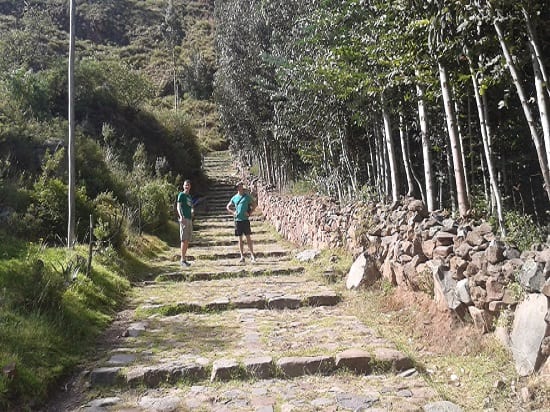
Resting the Legs for a Moment on the Walk Back Down
Tips & Things You Should Know
- Take a small bottle of water with you. There may be local vendors selling water, but you cannot count on them being there.
- Regular trainers (or sneakers as you like to say in the US) are perfectly suitable for this trek.
- Make sure you take sun protection! The trek is quite exposed, so you will get burnt!
- Walking sticks are still permitted in Pisac, take 1 or 2 if you need them.
- Although the trek is signposted, in some critical places it seems that the local authorities forgot to tell you which way to go. If you are unsure of which way to go, remember that the mountain must stay more or less on your right hand side. If you do this you can’t go wrong.
- Peru’s wet season is from December through until the end of April. If you are trekking during this time, be prepared for rain. Rain tends to fall in the afternoons, so trekking in the morning is advised. Be aware however, it can rain any time of the year!
- You will need a partial BTG ticket as a minimum to enter Pisac ruins. The ticket can be bought at the control point on your way into the ruins.
- The ruins are open every day of the year from around 7 am until 6pm.
YOU MAY LIKE

Lima to Machu Picchu – Agencies DON’T want you to read this!

#1 Rated Day Trips From Lima To Unforgettable Destinations
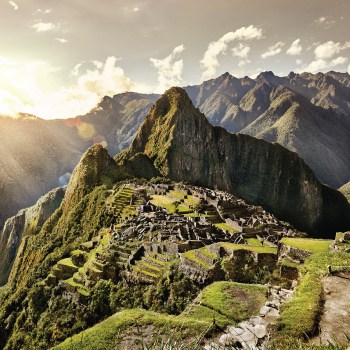
Everything You Need to Know to Avoid the Typical Tourist Mistakes At Machu Picchu

What NOT To Do When Visiting Rainbow Mountain
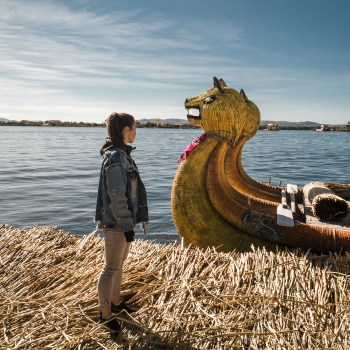
Spend 50% less and see 100% more in Peru
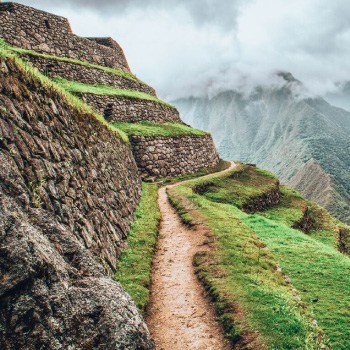
Machu Picchu Tickets – All You Need To Know!

These Hidden Destinations Just Outside Of Lima Will Blow Your Mind!

Peru – How to Avoid Being a Typical Tourist

OFFICIAL: This Company Was Voted The Best Way To Get Around Peru
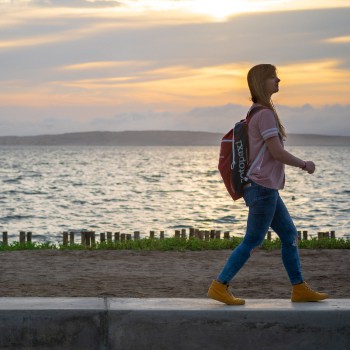
Peruvian Travel Secrets That Only The Locals Know


